We might get our first humans living long term on the Moon by the 2020s. How will they cope with lunar gravity, and will it need to be augmented, and if so, how? There is a lot written about artificial gravity to counter health issues in zero gravity. but what about artificial gravity on the Moon?
First though, does lunar gravity need to be augmented at all? It's often said, almost as if it must be a fact, that you would be healthiest at full g, less healthy at Mars g, even more unhealthy in lunar g, and have most health issues with zero g. And that might be the case. But you can't extrapolate a straight line based on only two data points, Earth gravity and zero gravity, and there are many other possibilities. This is a graph from a NASA roadmap report on artificial gravity which illustrates this point, that we know very little about health effects of partial gravity:
Examples of possible curves to join the two known dots of full g and zero g. Discussion on page 59 of this report
I'd go a bit further than this though and ask the question: do we even know for sure that the graph is monotonic (steadily increasing)? We know that hypergravity and zero g are bad for our health, when compared with full g. But are all levels of partial gravity (hypogravity) bad for our health? Might partial gravity sometimes have health benefits over full gravity?
Also, what if lunar gravity (say) is really good for some health conditions or particular individuals? For instance, does reduced gravity help with heart conditions because there is less blood to pump around because of the reduced plasma, and less work for the heart to do? Or does it make things worse, because of the reduced plasma and faster heart rate? Does it benefit particular age groups (e.g. elderly or young) or is it particularly bad for them? Is there a difference in effect for men and women, also what about women in pregnancy? Are there genetic differences in responses to partial gravity?
In the other direction, might some levels of partial gravity actually be worse for health than zero g? The various systems that make up our bodies respond in different ways to gravity, so might there be some issues with how they function together that only manifest at particular gravity levels?
So, from a mathematical pont of view, potentially there could be a lot more variation than that. Here is a graph I did to illustrate this idea

The numbers here are arbitrary. I just used 100 for zero g health, 500 for Earth gravity, and various numbers in between to make a nice graph, with the online Line graph maker. (If you want to duplicate it, I used 100 48 520 500, 100 650 400 500, 100 350 200 500, 100 150 600 500, and 100 40 50 500).
Also the graph may depend on your age, sex, health conditions, genetics, etc. Indeed each person might have a slightly different graph here and different optimal partial gravity levels for health.
Lines 1 and 5 show the possibility that some levels of partial gravity could be even worse for health than zero g, and lines 1, 2 and 4 show the possibility that some levels of partial gravity could be better for health than full g. Lines 2, 3 and 5 shows the possibility that lunar gravity could be better than Mars g for health, perhaps for some people or health conditions.
Can we rule out any of these possibilities yet?
We don't know yet:
- If lunar gravity is bad for health. It might even be beneficial, or beneficial for some people or health conditions or ages.
- What the optimum gravity health prescription is for humans, and whether this varies depending on age, for pregnant women, for young babies etc
- Whether a steady gravity level is best or one that varies (e.g. higher gravity when asleep or while eating or exercising, might varying gravity levels during the day be beneficial for health?).
- How easy it is to augment lunar gravity, and what human spin tolerances might be for artificial gravity on the Moon.
If you just want to sleep, eat, exercise, not use it for doing things that need fine control, then the coriolis effects don't matter either. People can adapt to coriolis effects also to the extent that when they stop spinning they feel that there is force acting in the opposite direction.
Also, we just don't know the gravity prescription for health. Maybe if you spin just a few minutes a day while eating or during exercise, it makes all the difference. Maybe lunar g is okay. We don't know until we find out more.
Also humans are not a single system, but a complex interaction of many things. It might be that your circulation (heart rate, blood pressure etc) works best at one gravity level, the cells of your body are healthiest at another, your muscles keep their best muscle tone at another, your immune system works best at another, and it is easiest to lose excess heat while exercising at another gravity level.
It may be that it is best to sleep at one level of gravity, to eat meals at another, to exercise at another, and to work at another, and to read a book at another, and another is optimal for using a toilet, another is best for ice skating, another is ideal if you want to be able to run as fast as you can unaided. It might be that in future space Olympics, all the sports use different gravity levels :). Maybe a space sprinter wouldn't think of running in anything except Mars gravity, but for hurdling, you wouldn't dream of any other level except lunar g. Again just making up numbers there for fun :). While human flight, I think that is supposed to be possible in lunar g, and surely would be harder in Mars gravity, so might be a new lunar sport. But who knows, maybe it is optimal in 1/100 g, or maybe that is only used for newbies and kids trying to fly for the first time.
So, you can't say if lunar or Mars gravity is better. The answer is just, that we don't know yet. And it might also be a case of "best for which people and which activities?".
What though, if we do need full Earth gravity for health, or higher than lunar gravity or Mars gravity? Can we augment it with artificial gravity? You'd think it would be possible as we can generate hypergravity on Earth, and people have even lived for months at a time in rotating rooms here during research into effects of spin motions on humans. So one way and another it should be possible on the Moon too, but how easy would it be to do? And could you build really large structures like this?
ARTIFICIAL GRAVITY ON THE MOON TO AUGMENT LUNAR GRAVITY
One day perhaps we will have centrifuges to generate artificial gravity on the Moon. We might build small rotating rooms or short arm centrifuges, or we may build large structures for lunar gravity. For instance, in the low lunar gravity, the lunar caves may be up to several kilometers across, similar in width to an O'Neil cylinder. If these caves exist, you have large spaces to use to build rotating structures to augment lunar g.
But how could these work? What kind of a structure could hold up a rotating habitat kilometers in diameter on the Moon? One big difference from spinning space habitats is that we will have lunar gravity acting along the rotation axis. In particular, how could you keep it balanced and avoid huge torques on the central pivot when people move around in the habitat? If you can use short arm centrifuges, then the problems are less acute, but it still seems a tricky engineering challenge.
Solution for large diameter centrifuges on the Moon
There's a solution though. For the larger diameter centrifuges, then simplest idea is to just build a train going round and round a circular track. Then there's no limit, you can have circular tracks kilometers in diameter if you so wish, either in the lunar caves or on the surface. Also you don't have to think of narrow carriages as on trains on Earth. As we saw in the section on Lunar railways, lunar gauges could be wide gauge, perhaps twice as wide as most track gauges, perhaps three meters between the tracks, or more. Your "carriages" could also be multistory, with no height restrictions, so in principle they could be as big as a 747 or larger.
If you use circular railways, you don't have any engineering problems of torque on a central axle or pivot. Whatever the diameter of the track, the force outwards is only your that exerted by the train itself and its passengers under 1 g. This is no more of a problem for wheels to support than a conventional train on Earth. This idea is often discussed online, but not so much in the academic literature. But there is a 1996 paper: Artificial Gravity Augmentation on the Moon and Mars
"One method of augmenting gravity is a extraterrestrial railroad. A vehicle on a circular track banked with respect to the horizon creates centripetal accelerations related to the speed of the vehicle and the diameter of the track. Incremental accentuation of gravity may be accomplished by switching the vehicle to a track of larger diameter and steeper bank. Rotation creates accelerations on the vestibular canals of the inner ear that will limit the angular velocity of the vehicle. Colonists would have the opportunity to work part of each day in simulated Earth gravity and easily access the planet's surface. The magnitude of gravity that will protect us is unknown, as is the frequency and duration of exposure. This must be investigated. An extraterrestrial railroad, as one solution to this problem, does not involve exotic technology and is readily expanded."
So the suggestion is that you have banked tracks for the train to run on. As you transition from lunar gravity to full gravity the train would move to steeper and steeper banked tracks so that the floor always feels level to the passengers. The transition would go in the opposite direction when the passengers want to leave the train, the train would move to the less steeply banked tracks first.
Another idea suggested in the forums is a tilting train:

A JR Hokkaido KiHa 283 series tilting DMU on a Super Hokuto limited express service on the Hakodate Main Line, photo by Japanese wikipedia user: 出々 吾壱
For full g it would need to be tilted by 80 degrees instead of the 8 degrees shown in in this photo. For large amounts of tilt, perhaps this would work best if the carriage is in an inside compartment only indirectly coupled to the outside while the train is moving. This idea could also be used with a smaller amount of tilt to keep the floor of a train level while transitioning between tracks with different degrees of bank, and then finally to a stop.
To deal with issues of friction between the trains and the tracks we can
- Use maglev trains so that there is no physical contact with the tracks (though with safety mechanisms to make it impossible for them to leave the tracks)
- Run them in high vacuum - would be the default situation on the surface. In lava tube habitats, then you don't fill the entire tube with air, just the habitats.
- Convert the regolith to glass below the track and for a few meters to either side to reduce dust problems and regularly clear the tracks of dust (not needed very often probably as the dust does get levitated but probably not in huge quantities.
Also bear in mind that in a future where we can build large circular tracks like this, it's also gong to be easy to lay out large areas of solar panels on the surface and we can also design power storage during the lunar night, and by then we may have small nuclear power stations too. So, though it's not going to be as efficient as a spinning habitat in space which spins pretty much endlessly once you set it spinning, it's probably not going to be a huge power drain on a working habitat. See Power during the night.
However perhaps we don't need such large scale systems for artificial gravity on the Moon. First, for all we know to date, lunar gravity might already be healthy for humans. In that case we don't need it at all.
Artificial gravity only intermittently during the day.
Or we might need gravity only intermittently during the day for health. Here is a study that found that full gravity in a centrifuge for just one hour a day made a big difference to muscle loss in bed rest volunteers lying with head slightly lower than their feet to simulate zero g. Other studies come to similar conclusions. Other experiments use "dry immersion" to simulate zero g, where a volunteer is immersed in warm water with an elastic suit to keep them dry, which has similar physiological effects to head down bed rest, but the changes take effect more quickly.
Dry immersion used to simulate zero gravity in some experiments, figure from Artificial Gravity by Clements et al. Drawing by Philipe Tauzin (SCOM, Toulouse)
The volunteer is submerged in warm water, protected by an elastic sheet to keep their skin dry, to protect them from skin softening due to immersion in water (skin maceration).
A 2016 survey of the literature to date, "Centrifugation as a countermeasure during bed rest and dry immersion: What has been learned?" concludes
"Centrifugation for as little as 30 min per day was found to be effective in mitigating orthostatic intolerance and strength in postural muscle after 5 days of bed rest, but it was not effective in mitigating plasma volume loss."
In other words it helps with muscle wasting and difficulty in standing up in full g after prolonged exposure to the simulated zero g (orthostatic intolerance) but 30 minutes exposure per day is not enough to help with the reduced amount of blood supply to the body which is another effect of zero g on astronauts. They suggest more experiments are needed to find out effects of longer periods of artificial gravity per day. All the studies they survey involved male subjects, and women respond differently, they appear to be able to regulate blood pressure in ways that men cannot. They also suggest that the spin rate be adjusted to achieve full g at the heart rather than the feet, and that it could be useful to let the subjects choose what level of artificial gravity they want to use. Many other suggestions in the detailed survey.
We have actually tested artificial gravity in space, the Neurolab experiment, flown in 1998 able to produce artificial gravity of between 0.5 and 1 g in an off axis rotator. Although the astronauts were only tested for a few minutes a day, the four astronauts tested didn't have the same problems with standing upright on return to Earth that most (64%) astronauts have. It's a small sample but the probability that this happened just by chance is 1 in 60. See page 24 of this report.
Tolerance of high spins in zero g, and adaptation to higher rotation rates
Also, from some early experiments in zero g, and anecdotally (Tim Peake's demo of tumbling at 60 rpm for a couple of minutes in the ISS), astronauts in zero g can tolerate spins that would make them nauseous on Earth.
The same may apply in reduced gravity too. From some parabolic flight experiments by Lackner and DiZio in 2000, summarized on page 21 of this report
“the severity of side effects from Coriolis forces during head movements is gravitational force-dependent, raising the possibility that an artificial gravity level less than 1 g would reduce the motion sickness associated with a given rotation rate”
Also it's possible by acclimatization to gradually adapt to higher rotation rates without ever experiencing motion sickness.
So one way or another, we might be able to tolerate higher spin rates on the Moon. We would need to do experiments to find out if this is the case. But if we can use higher spin rates there, the centrifuges can be smaller for the same amount of artificial gravity, and still be tolerable. See my section below on: Small centrifuge based artificial gravity experiments in LEO
Design ideas for smaller centrifuges on the Moon
A small centrifuge could be based on the same principle of an external track around the centrifuge rather than a central pivot. It's just like a model railway going round and round :). Same idea as the larger one but on a smaller scale.
It could consist of a drum inside a container and motors that drive the drum around and just wheels (or maglev) between the drum and the outermost walls of your habitat. This would seem an especially good approach if the outermost walls are very strong, for instance, if it is in a cave or you can pile a ramp of regolith around the outside of your habitat.
The same approach could also be used for a rotating room such as a dining area, say. Or a gym or sleeping compartments
I'd like to suggest another idea which I haven't seen yet in papers or discussions online - a central pivot with living quarters suspended from it like a swing carousel, or indeed maybe a smaller scale swing carousel inside a habitat for sleeping or for eating or exercise. On the Moon, if spun fast enough for full Earth gravity, they would be angled about ten degrees from horizontal.
Another related idea is to build a velodrome style track on the Moon for cyclists to use to keep healthy.

Dunc Gray Velodrome in the City of Bankstown, Australia, cycling venue for 2000 Olympic games. Photo by Adam.J.W.C. It bends at a maximum angle of 42°. A more steeply banked velodrome on the Moon, banking to a maximum angle of 80° would let cyclists generate between half and full g by cycling round and round. For normal cycling speeds of 10 to 15 meters per second, or 22 to 33.5 miles per hour, the lunar velodrome could be 50 meters in diameter, see Human Powered Centrifuges on the Moon or Mars.
That's rather fast though. Fit astronauts could do it for short periods of time. Here are some example speeds from a sporting cyclist. He gives an example of reliability rides involved riding 50 miles in 3 hours or 16.6 miles per hour.
The AG we want to generate by rotation to combine with lunar gravity to create a sensation of full gravity for our astronauts is sqrt(9.8072-1.6222) or 9.6719 m/s/s.
It would be rather like the "wall of death" motorcycle stunts (typical radius 3 to 5.5 meters) :
- but at the much lower lunar gravity, you only travel at jogging speed, and you haven't got far to fall and the gravity is much lower also. So I see no reason why you can't have a "jogging track" inside the habitat similar to the jogging track inside Skylab.
Jogging starts at 3.30 and they jog at around 10 rpm, so probably experienced around 1/3 g at their feet, taking the radius as 3 meters. Jogging at around three meters per second, or about six miles per hour. The longest jog is for one minute 50 seconds (including various gymnastic tumbles in the middle).
The speed you'd need to cycle to reach full g for artificial gravity depends on the radius. So for a radius of 5.5 meters, like the larger "wall of death", that's a speed of 7.3 meters per second or 16.3 miles per hour, so that's the reliability rides type speed. For a radius of 3 meters, it's a speed of 5.39 meters per second, or 12 miles per hour.
But this is only going to provide artificial gravity while exercising, and indeed, only while cycling. That leads to another idea, what about a moving walkway? Similar to the idea of a train, but you can do it inside a habitat. The Trottoir Roulant Rapide in the Montparnasse—Bienvenüe Métro station in Paris. however moved at 9 km / hr or 5.6 miles per hour, 2.5 meters per second.
They ran into problems during the acceleration phase with the elderly and frail tending to fall over plus the need to hold onto the rail, leading to injuries, but that's perhaps not an issue for early days on the Moon with fit astronauts. Also you'd have the much lower lunar gravity so the risk of injury would be less. Still you'd also need it to move faster than this, a little more than double this 2.5 meters per second for this to generate full gravity even for a small 3 meters diameter track. A walkway like this on a 3 meters radius track would generate about 2.67 m/s2 or about 27% of Earth gravity at your feet, less at your head of course.
Variation in amount of Artificial Gravity across the width of the track
Another issue here is that unlike artificial gravity in space, the amount of AG will vary across the width of the track. The amount of this effect depends on the radius of a centrifuge. Suppose for instance it's a 4 meter radius centrifuge (larger than the Skylab jogging track, head two meters from the axis when standing up), and the track is 2 meters wide (or you move 2 meters sideways on a wider track).
And - let's use an exact figure for the angle, may as well, asin(1.622/9.807) in degrees = 9.52 degrees for the angle from the vertical of our centrifuge wall. So now we have 2×1.622/9.807 = 0.33 meters difference in radius between top and bottom of our centrifuge. And the AG we want to generate by rotation to combine with lunar gravity to create a sensation of full gravity for our astronauts is sqrt(9.8072-1.6222) or 9.6719
So then with a 4 meters radius centrifuge, 14.85 rpm, then it is 10.47 m/sec2 AG at the widest radius at the top of the slope from the lunar perspective - (and of course, 9.807 m / sec2 at the bottom) so you would get heavier by 6.7% by walking two meters sideways. I'd have thought even that would be reasonably tolerable.
Depends what you are doing, fine control or just eating a meal or sleeping, or using the toilet - or exercise. But we are pretty good at learning to adjust to things, and I wouldn't be surprised if we could learn to adjust to a variation in weight of 6.7% even for tasks that involve fine control. The only way to find out for sure would be to test it, and we couldn't simulate it on Earth.We couldn't really simulate it that easily in space either, so perhaps after preliminary experiments in LEO to find out if we even need more than lunar gravity, and if so, what the gravity prescription is for health and if it is needed 24/7 or just for a short while each day, we would just have to test it on the Moon. If it is a big problem we need larger centrifuges but I'd have thought it has a decent chance of being okay.
Summary
It would need careful study I think. So the options seem to be, so far:
- Train, would work well for larger diameter tracks but you do need to make the tracks and habitats like large train carriages, capable of moving on wheels. You need to work out how to get on and off the train and how to deal with the tilt with track or train banked to 80 degrees.
- 50 meter diameter velodrome banked to 80 degrees - super fit cyclists would be able to generate full g for short periods of time
- A smaller, perhaps three meter radius velodrome could double up as a jogging track like skylab - would generate more than lunar gravity, around a third of full g. An experienced reasonably fit cyclist could reach full g and keep this up for hours on end (twelve miles per hour), and a fast runner could achieve full g for short periods of time. However can only achieve full gravity while exercising
- Inclined moving walkway - would need technological development to be safe and easy to use at the high speeds needed (similar to cycling speed or faster). Could generate up to a third of Earth gravity however reasonably easily for fit astronauts, using technology similar to the Trottoir Roulant Rapide. This idea could be combined with the velodrome idea - you just switch off the moving walkway to turn it into a velodrome or jogging track.
- Spinning rooms for smaller centrifuges or sleeping compartments. These seem the most feasible for an early stage.
- Hammock or swing carousel type - suspended from cables attached to a central pivot - work on small scale but less mobility as you have to remain within your swing or hammock. Still you could eat food there, read, sleep, do some exercises. Easiest of all for early experiments.
I found very little on this topic in my literature search. Most is in forum posts apart from the two papers I mentioned. Here are some of the discussions and posts I consulted, though of course they are not peer reviewed, used as a source of ideas:
- Forum discussion of the idea here: Surface-based centrifuge for lunar colonization
- More ideas here in a blog post: Banked track Magnetic levitation based artificial gravity
- Discussion on Case for Moon first facebook blog
- Lunarpedia entry here Artificial Gravity on Luna
And the papers I mentioned already:
If you know of anything else on this particular topic of artificial gravity on the Moon, do say!
I'm using spincalc here for AG calculations
Effect on plants
The levels of artificial gravity needed for phototropism is between 0.1 and 0.3 g. So some higher plants would grow normally on the Moon without need for centrifuges, while others might need up to Mars levels of gravity. Here Mars may have an advantage for growing plants.
I think it's possible that the Moon may also have advantages though, because you'd have much less by way of gravity along the spin axis. As a result our otoliths which sense linear acceleration would be less stimulated so perhaps less conflict between the otoliths and our vestibular system. We would have to do research to find out why it is that astronauts are able to tolerate spin motions in zero g, which they can't tolerate in full g. Once we understand this better then it would be a major question to see if this also applies to some extent to lunar gravity. If it does we could use much smaller centrifuges for artificial gravity on the Moon for longer periods of time.
SMALL CENTRIFUGE BASED ARTIFICIAL GRAVITY EXPERIMENTS IN LEO
This is open research, so we don't know where it is headed. So we should certainly also try small scale centrifuges as well, such as MIT researchers recommended in this paper.
"In order to truly address the operational aspects of short-radius AG, a centrifuge must be made available on orbit. It's time to start truly answering the questions of "how long", "how strong", "how often", and "under what limitations" artificial gravity can be provided by a short radius device."
For plants of course, but also for humans. Artificial gravity was a priority for the ISS up until the loss of Columbia in 2003, first in NASA Ames, then later on the project was passed on to the Japanese space agency, then called NASDA, now called JAXA, who built a Centrifuge Accommodations Module which however never flew because the Space Shuttle was needed to get it into orbit. See page 55 of this paper. Then in 2010 there were proposals to send a centrifuge to the ISS, but it never happened.
We don't know what any of this will be useful for. Perhaps short arm centrifuges turn out to be a vital capability for human health for deep space missions, or perhaps it's the key to health for lunar habitats, or maybe it makes exercise in space much more effective, or maybe it just makes it more comfortable for astronauts in zero g to eat their meals or use a toilet with brief periods of artificial gravity. As basic research, we don't know where it is going until we try it.
It seems that we can tolerate faster spins in zero g than on Earth. Here is Tim Peake spinning at about 60 rpm in the ISS. for a couple of minutes, no nausea, only momentary dizziness when he stops.
He says he is pretty sure he couldn't tolerate that on Earth. So anecdotally it suggests that we can tolerate very high spin rates in zero g. Taking the radius as 0.25 meters at a guess, his head and feet will be both under full g, his torso around zero g as he spins. Could he spin like this indefinitely? If so, it's very promising I think for the use of a short arm centrifuge to counteract health issues of humans in zero g.
He says his "vestibular system switches off" - but that's just an informal theory of an astronaut. We do have a more detailed hypothesis as well - the experimenters for the Skylab litter chair experiment hypothesized that the reason their subjects could tolerate back and forth spins without getting nauseous in space was because the otoliths aren't stimulated.
Our otoliths are separate from the vestibular system. Instead of sensing turning motions, they sense linear acceleration. In any spin on Earth you have these two things at once - the spin sensed by the vestibular system, and the linear acceleration due to gravity along the axis sensed by the otolith system. Perhaps we get nauseous while spinning as a result of an interaction between the two?
They hypothesized that the reason you don't get nauseous is because the otolith system senses nothing. But they didn't do any more experiments after that to try to follow it up to see if this was correct or not AFAIK. I suggest it should be a top priority to research this. Not just a thing that astronauts do out of curiosity and fun. Someone should be measuring and testing them, and finding out why they have such spin tolerance in space!
And then based on those results, the next step would be to see if it can be used to generate artificial gravity and perhaps prevent deterioration of health in space. See what effects these spin motions have on health. I think this seems very promising for the possibility of short arm centrifuges dealing with issues of human health in zero g.
These "short arm centrifuges" don't need to be big heavy machines as they are on Earth. Here they have to be strong enough to hold up the weight of a human along the spin axis ("downwards" on Earth) as well as exerting a similar force towards the spin axis for the artificial gravity. But in space, they can be as simple as a hammock in structure, because they only need to hold the weight of a human in one direction only - away from the spin axis. They don't need to be rigid structures either. Like a small version of the fairground swing rides - except that with no gravity along the rotation axis, the swings would just hang out horizontally.
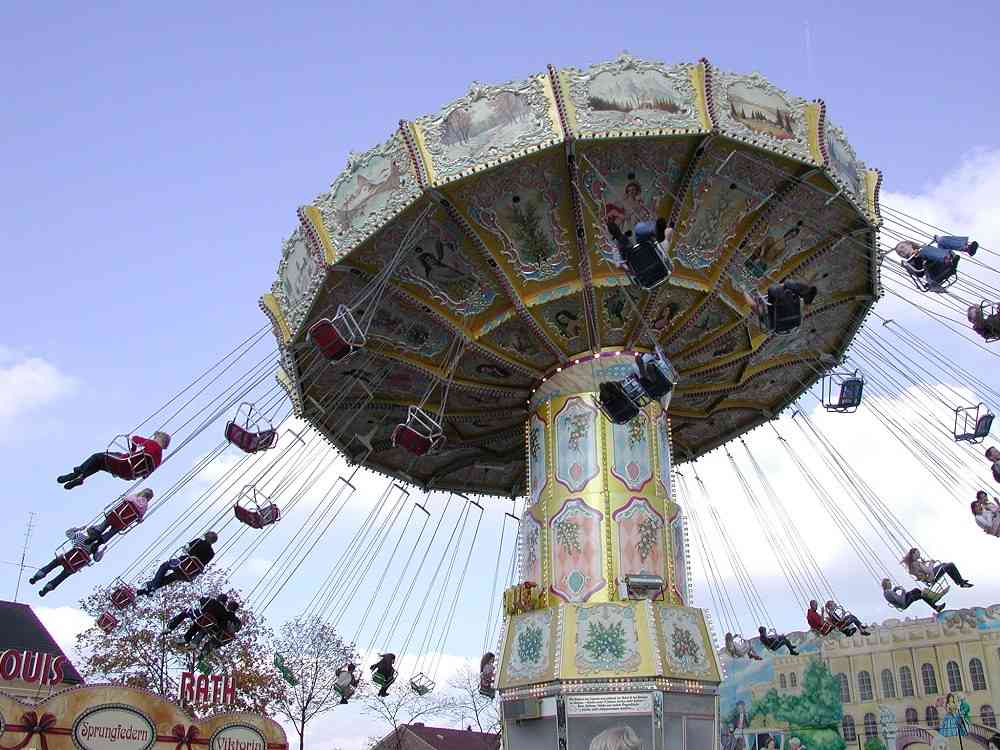
My rough diagram of a small version of this inside a space station is like this:
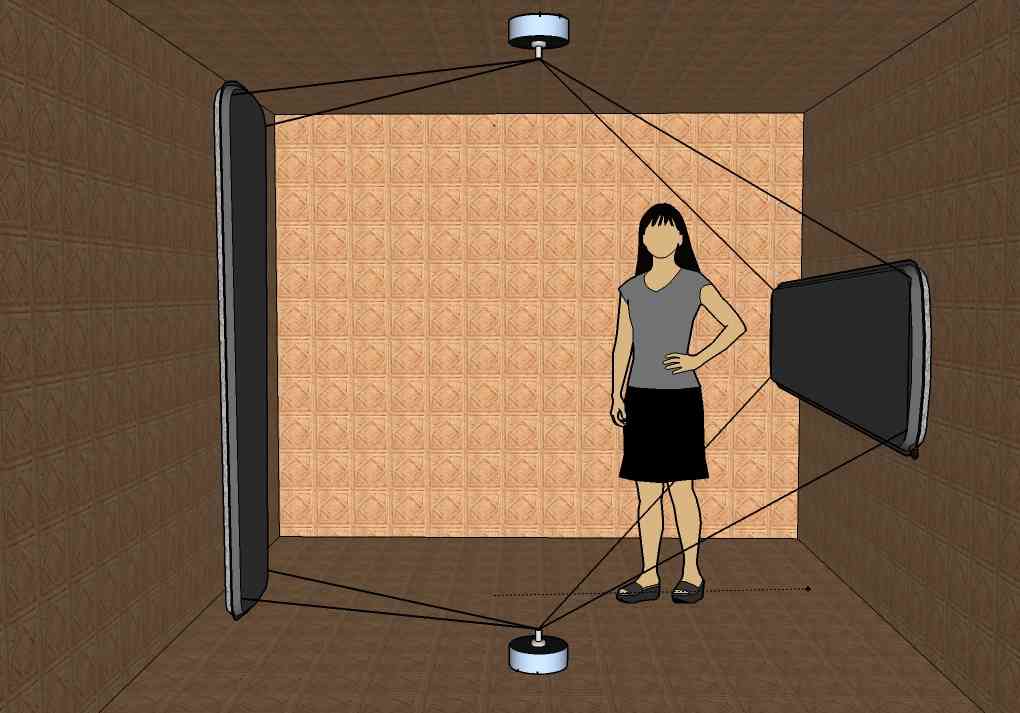
Sketch to show two possible orientations for a spinning hammock inside a large space station module. To prevent this from spinning up the station, then there'd be a counter rotating weight automatically spun in the opposite direction to the astronaut, perhaps attached to the "floor". The motors would not need to be powerful in zero g. It's like spinning a cycle wheel - easy to spin up, and you could stop it just by putting out your hand.
For a very small one meter diameter centrifuge like this, you can achieve full g at 30 rpm and with the astronauts moving at only a little over 3 meters per second so it is very safe. That's around seven miles per hour - faster than a jog, but easy running speed so it's not that fast (a little faster than the average speed for the London marathon). For more about it see my Could Spinning Hammocks Keep Astronauts Healthy in Zero g?
Idea for early short arm centrifuge experiments in LEO.
And here is a 2011 idea for a 1.4 meter radius centrifuge to be located in the permanent multipurpose module:

Sketch of the AGREE centrifuge for the ISS. From page 15 of Design and Validation of a Compact Radius Centrifuge Artificial Gravity Test Platform. It would have replaced the four racks at the end of the Permanent Multipurpose Module. Astronauts would cycle in a seated position. This is one exercise excellent for health which you can do with an extremely compact radius centrifuge like this. Chris Trigg concludes: "Given the compact design, subject positioning, available sensors, tested accuracies, and validated operations, the MIT Compact Radius Centrifuge represents one of the most unique yet realistic centrifuges currently in available for artificial gravity research. It is hoped that through these future studies the MIT CRC will provide a better understanding of the effects and capabilities of an inflight-centrifuge, and perhaps contribute in some small way to progressing towards the inevitable trip to Mars. "
a sketch for a human powered artificial gravity in the ISS .
NASA also took out a patent on the idea, here is a drawing - it's for two cyclists, powered by either one or by a third cyclist outside the centrifuge
And this shows it in experimental use on the ground. It's never flown in space.
The ISS is so full of equipment, that it would be hard to find a space for even a small centrifuge now, although the modules themselves are easily large enough for it.
Inside the Tranquility module when first installed - with a diameter of 4.48 meters, there is enough space for a small centrifuge, but you couldn't do it now with it lined and full of equipment.
Perhaps a very small scale experiment of this type could be done in the new largely empty BEAM inflatable module in the ISS or some future inflatable module?
Beam module expansion Progress The inflatable beam module. Internal diameter is a little over three meters. Though it's smaller than the ISS modules, it is also nearly empty.
Cutaway diagram of the BEAM module now attached to the ISS (credit Bigelow aerospace).
It's a bit small inside, but apart from those four obstructions near the center there would be enough room for a small hammock style centrifuge, with the astronaut reclined to one side of the axis, as in a hammock, for first experiments in effects of artificial gravity on humans in space. It's also large enough for the MIT compact centrifuge / cycling exercise machine described by Chris Trigg.
If we can't do it within the current ISS, it's certainly well within the possibility for future space stations or modules, for instance any of the larger Bigelow modules if placed in LEO would have plenty of space for an artificial gravity centrifuge.
Cutaway image of the much larger B330 credit Bigelow aerospace. There's plenty of space for a large centrifuge here.
Indeed, though I hope the main aerospace agencies will do these experiments in the near future as they move towards deep space missions and the return to the Moon, if they don't, I wouldn't be surprised if private entrepreneurs explore it instead. For instance artificial gravity for toilet facilities or for eating and drinking could make space hotels much more convenient for tourists, so surely they will explore that if we have space hotels in the future. And if artificial gravity helps to keep the tourists healthy on return to Earth, able to stand immediately on return to Earth for instance, again that's a strong incentive for artificial gravity sleeping or exercise artificial gravity in space for medium duration tourist visits. Also artificial gravity could help prevent space sickness in hotels for tourists too.
NASA has recently been tasked by Congress with spending at least $55 million by 2018 on a "habitation augmentation module" that could be used in cislunar space and eventually for journeys to Mars. So I wonder if there is any possibility of a centrifuge for that?
The idea of using a small arm centrifuge in space instead of a large tether has some advantages in LEO, if it works
- More habitable volume available for the astronauts as the space station continues to function under zero gravity, and they don't need a surface to walk on either, so they can continue to use any of the surfaces such as ceilings and floors for any purpose (compare page 103 of this report, though there it's given as a reason for zero gravity missions)
- Astronauts can have individually tailored levels of artificial gravity. That could be due to variation in spin tolerance, or for some other reason, they could set their gravity levels in the small centrifuges to whatever they want.
- Gravity can be intermittent - if you only need gravity for an hour or so a day or only while asleep or exercising etc.
- Zero gravity when you want it
- Easy to dock (with a tether system you need central hub modules to use for docking).
Then, depending on what the reasons are for extra spin tolerance for astronauts in zero g - the same thing might well work in lunar gravity too. For instance if it is due to conflicting sensations between the otoliths and the vestibular system, the astronauts would sense much reduced linear acceleration along the axis, not quite zero, but small compared to the level of artificial gravity perceived from the spinning motion. Could that mean that you can tolerate rapid spins in a lunar habitat too just as you can in the ISS, or perhaps intermediate between zero gravity and Earth gravity in tolerance? There's no way to know except by experimenting and researching. And whether it works for humans, it would also be an extra tool in our toolkit for other things, for instance some plants may do better with extra g even in lunar gravity.
However the least cost way to get started on this is in LEO first. We could do that in the very near future if there was the interest in doing it, and develop the understanding and ideas we need to then design the follow up experiments for the Moon. Then finally, we can design habitats for humans and greenhouses for plants on the Moon using the results of all this research. Again this could go through very quickly, a few years at most to get the early LEO experiments underway, if there was sufficient funding and interest in it.
Again this is a situation where a process of open discovery and development could lead to much better designs for lunar habitats than a "design it all first" approach. Perhaps the first habitat on the Moon should be an experimental module to test various ideas for closed systems and artificial gravity and human and plant tolerance of lunar gravity before we progress to build an entire village there.
See also my
- Can Astronauts Spend Years In Space - And How Quickly Can They Recover On Return To Earth?
- Could Spinning Hammocks Keep Astronauts Healthy in Zero g
These are two sections from my "Case for Moon First" - I've come across many new things while writing this book and plan to put some of the new sections up here as a series of articles. This is the first of them.
Where to find "Case for Moon First "
- Buy this article from Amazon as a booklet for kindle

Case For Moon First: Gateway to Entire Solar System - Open Ended Exploration, Planetary Protection at its Heart - kindle edition
- Read it online on my website (free).
- Some of you might also find Pocket useful - I've been suggested this by a keen reader of my posts. It lets you read articles offline without any internet connection. It's free (with a premium version which few people need).
The kindle book may be useful if you want it formatted as a book, which you can read on your kindle, and also on most major smartphones, tablets and computers, using the free kindle reading app.
FACEBOOK GROUP
I've made a new facebook group which you can join to discuss this and other visions for human exploration with planetary protection and biological reversibility as core principles. Case for Moon for Humans - Open Ended with Planetary Protection at its Core
SEE ALSO

Robert Walker's posts - on Quora
And on Science20

Robert Walker's posts on Science20
KINDLE BOOKSHELF ON MY AUTHOR'S PAGE
And I have many other booklets on my kindle bookshelf My kindle books author's page on amazon


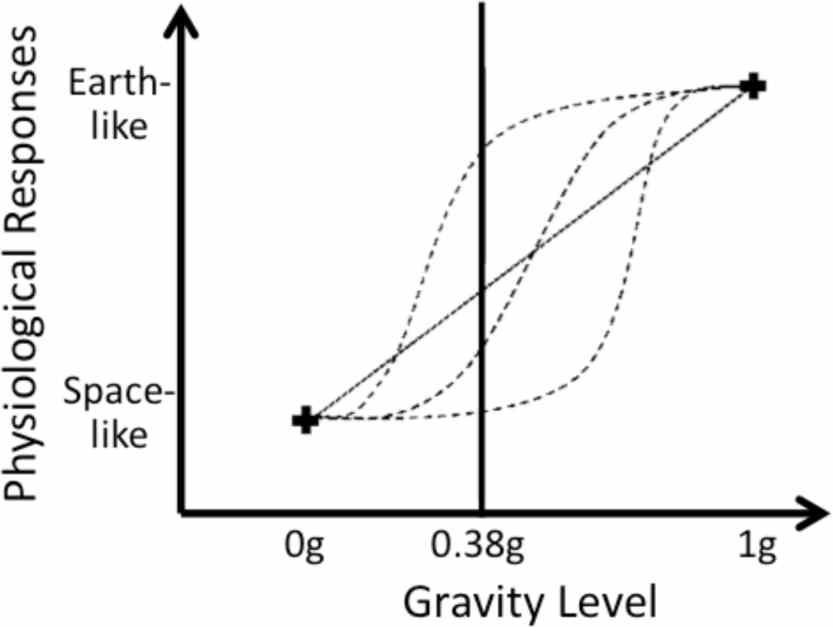

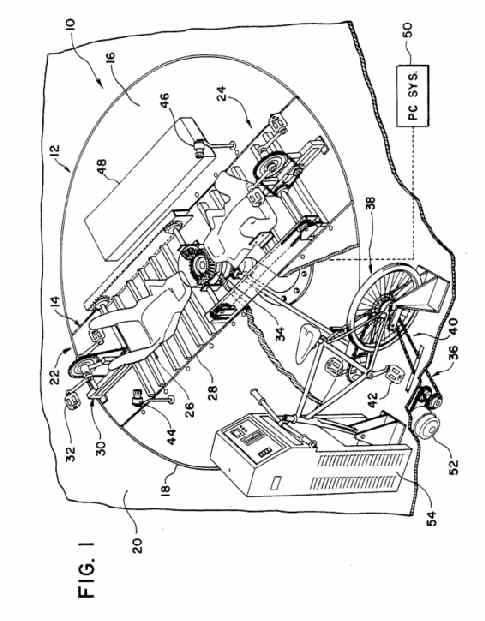

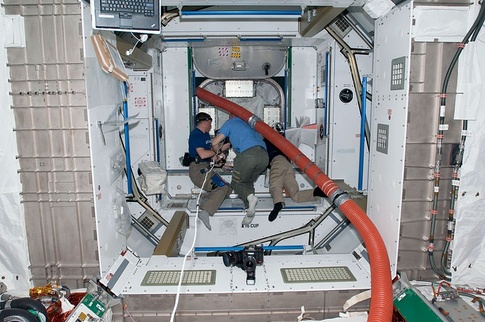
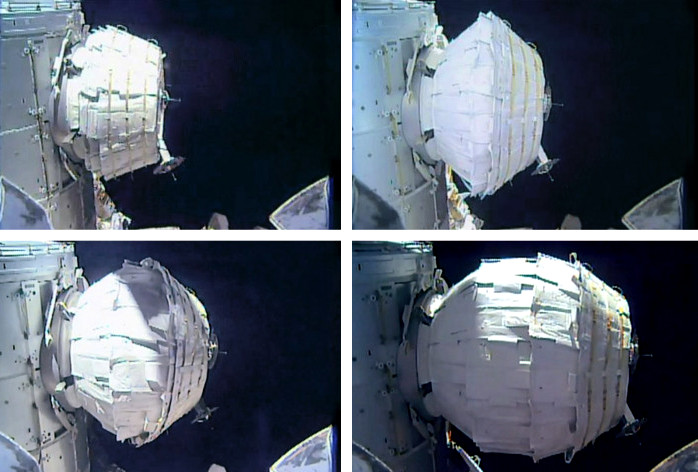
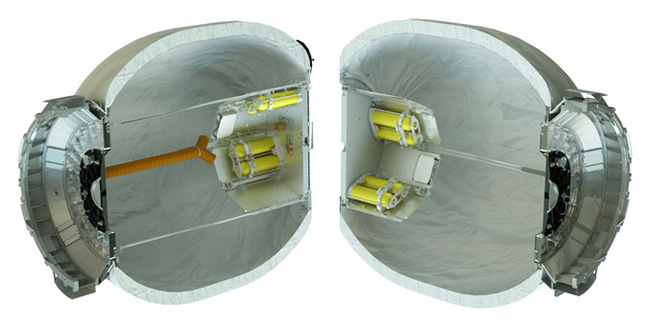




Comments